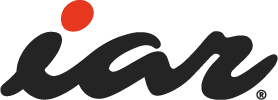Home > On-Demand Archives > Talks >
Voice-enabled IoT devices, everywhere
Brian Clinton - Arm - Watch Now - EOC 2020 - Duration: 27:54

Following the success of Voice Assistant over Smart Speaker, a new breed of voice-enable devices are services are being developed which will enable massive dissemination of voice activation services, everywhere. Smart home, smart health and Industrial applications are some of the first that will benefit with deployment through smart home appliances, health assistants and smart manufacturing. This talk goes through a case study of a constrained IoT voice assistant implementation on an ultra low power, lost cost device. It describes the hardware and software functional blocks that is needed in order to perform voice recognition in harsh audio environments. It shows the benchmarks of analog front end processing and Keyword Spotting in the system. It explains the communication and security services integration, from the root of trust to cloud communication. Finally, it analyses what the future of voice and accompanying services and devices will look like what solutions will be needed.
Yes.
Have you seen any traction on usage of BLE interface to perform voice command interpretation on another device (other than the node device with mic array) within the mesh network? If so, is latency a bigger problem with BLE compared to the AIA demo you shared using Wifi?
Hi Nraj, Personally I have not seen any usage of BLE as an interface to send data to another device for processing. However, that's a really nice use case. Agreed that latency in the system can be an issue in the case of a meshed network and would need to be a considered as an inhibitor for the and use case application.
It is nice to see that low power boards (hence battery powered devices) can now recognize vocal commands, provided the internet is available. I must admit that I would have liked to see a more impressive demo, where some interesting action is performed based on what was said, rather than just showing what every smart speaker already does.
Hi Jean, Thanks for your comments. The PoC demo that I showed is fairly simple, agreed, and does not perform any action other than a voice assistant. The purpose of this was to show that a voice assistant type of product can be run on a Cortex-M4F, mimicking what we see on a much more expensive smart speaker. However, we are working on v2 of the demo to showcase many more features. Keep an eye out for that. Also we are creating a whitepaper on the topic and will also release that soon. The Whitepaper will go into more details. We also plan to release the SW Open source in the near future too...
























With 1 mic, isn't triangulation a huge issue?